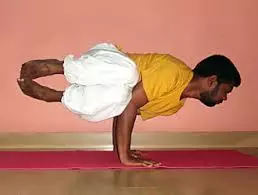OF CABBAGES AND KINGS | Bollywood movies, yoga, curry… Can India’s soft power rise like America’s? | Farrukh Dhondy
Then there was the prank we played in college on poor Professor Ketkar, who lectured on chemistry. Most of the hundred and twenty in his class had been to see The Ten Commandments, in which a bald Yul Brynner had played the Egyptian Pharaoh and peremptorily commanded his chamchas

“I suppose there were songs of innocence
Myself and friends at play
Then, inevitably, songs of experience
Lament of the long-lost day?
Where have they gone, the girls and boys
Who danced in the monsoon rains?
Is the devil the only one who enjoys
The futures which God disdains?”
From Dust to Daastaan, by Bachchoo
In very many publications today the phrase “soft power” features for discussion. I think its presence is probably to highlight a contrast with what must be called “hard power”, though I haven’t seen the latter phrase formulated in print. I must admit, gentle reader, that though I’m fairly literate, I have never quite pinned down the meaning of the first phrase, though I am fairly certain that its opposite means what it says.
In the present political situation, it means the possession of missiles that can deliver nuclear bombs or military capabilities that evacuate, say, Gaza, of all reluctant Palestinians and launch drone attacks on Ukraine.
It also means economic bullying -- the imposition of trade tariffs, which Donald Trump every day boasts about. It’s all about who can, being richer, impose conditions on those who are poorer. The United States, in a classic example, talks to Ukraine demanding its minerals in exchange for perhaps -- only perhaps – persuading Russia’s Vladimir Putin to go easy on killing its population.
I presume, then, that “soft power” means, in its broadest sense, cultural influence and spread.
There is no regretting now the universal influence of pop music, dominantly American till the advent of the Beatles and the Rolling Stones, and the films with which I and my generation of Indians grew up with and were influenced by. Most of my Indian contemporaries can still recall the entire lyrics of “See you later Alligator” or, less regrettably, those composed by Bob Dylan or Joan Baez.
Then there was the prank we played in college on poor Professor Ketkar, who lectured on chemistry. Most of the hundred and twenty in his class had been to see The Ten Commandments, in which a bald Yul Brynner had played the Egyptian Pharaoh and peremptorily commanded his chamchas. So, when Prof. Ketkar wrote an equation on the blackboard and asked us to copy it and work it out, the whole class rose, saying: “So it shall be written, so it shall be done!”.
Soft power compels.
Does or did India possess any comparable soft power? In the decades when we picked up phrases from American films and pop songs, our own Hindi films became hugely popular in most countries of the Third World, including the non-metropolitan satrapies of the Soviet Union.
Raj Kapoor’s films had, throughout the 1950s, 1960s and 1970s perpetrated the modern myth of India -- that the poor, the peasants, Raju the boatman, even the awaara pickpocket of the cities, were pure, admirable and heroic. The villains were the fellows who imitated the West and wore ties. The popularity of the myth spread to the places where the population identified with it.
Indian soft power of those times.
But the world moves on.
Today, perhaps Indian soft power is represented by the spread of Indian cuisine. “Curry” is pretty much universal and the “Star of India” or other such restaurants are probably owned and run by Bangladeshi immigrants.
More seriously, we’ve exported yoga and the idea, true or false, that India and Indian culture are a fount of spirituality. We are a nation of ancient spiritual truths.
Centuries ago, India did export Hinduism to Southeast Asia and Buddhism elsewhere, and now to the West, in several pure and adulterated forms, yoga -- - it being not so much a philosophy, but a sort of gymnastic practice to keep supple. Or perhaps that’s harsh -- there must be practitioners who adopt yoga as the ultimate salvation for their souls.
Apart from a continuing appeal to the Indian diaspora, the age of the Hindi film as one of the perpetrators of the subcontinent’s soft power, is long gone.
Even so, the West is, in perhaps small and selective part, indicating a curiosity to understand the subcontinent through its media.
Britain boasts two Asian film festivals and I have, gentle reader, attended both over the years and witnessed them grow from esoteric concerns of the diasporic communities to general cultural ingredients of Britain’s exhibitions.
While this may be true, my half-British children and their friends may know that I worked with a famous Indian actor called Aamir Khan, but have no real idea who he is.
I don’t think any amount of persuasion will win them over to watch today’s output of Indian films, unless of course one wins a prize at Cannes. They’d much rather follow, with the rest of the British population, something on Netflix or Amazon Prime.
Despite a flourishing prevalence of philosophical and cultural analysts and commentators, I haven’t come across even one who expounds convincingly on the connections, historical and contemporary, between hard and soft power.
There is no doubt that the colonial might of Britain in the past imposed the English language on even resistant nations of the globe.
America’s predominant hard power is directly responsible for the universal spread of its modern myth of “superheros” such as Superman, Batman, Spiderman, Magagaman (er… soon to become an icon?) through which humans acquire the powers of machines -- flight, X-ray vision, invincibility to bullets etc.
Hard causing Soft? A new book?
